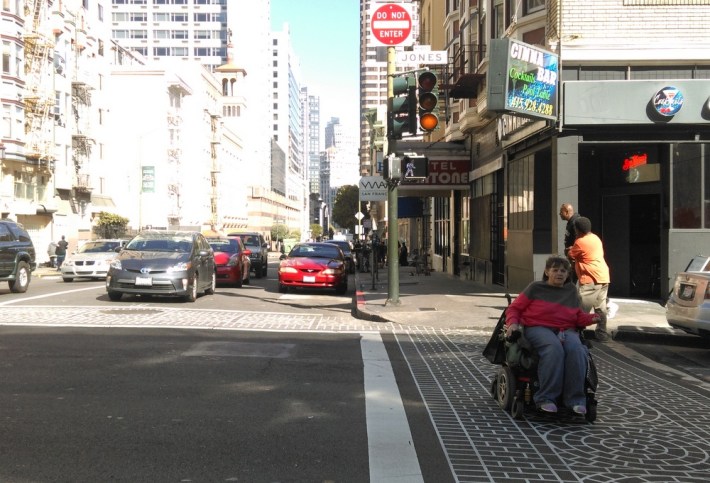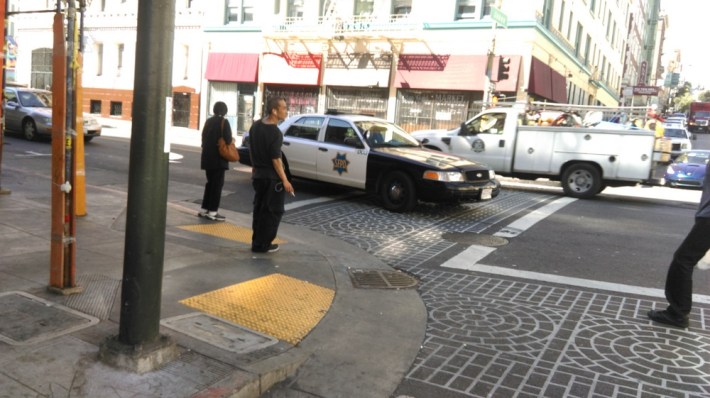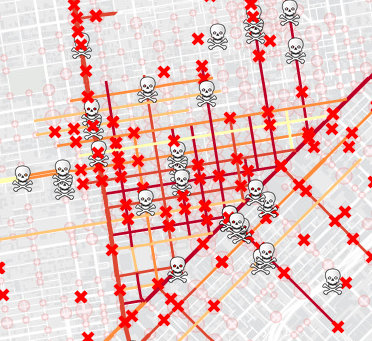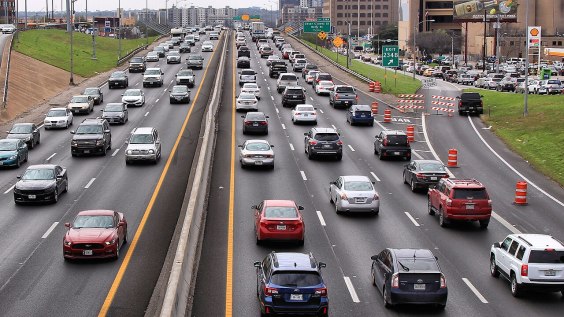
The SFMTA recently implemented a simple measure to improve visibility at crosswalks in the Tenderloin, a neighborhood with very high concentrations of both pedestrian injuries and children.
Corners at 80 intersections got the "daylighting" treatment, which improves visibility by clearing parked cars that obscure sightlines between drivers and people in crosswalks. It's one of the latest efforts in the city's Vision Zero campaign, which is targeting the 12 percent of city streets that account for 70 percent of severe and fatal traffic injuries.
To hear KPIX reporter Ken Bastida tell it, these measures to reduce traffic violence are just an annoyance for people who need to find a curbside parking spot right now.

"Think it's getting harder to park in San Francisco? Well, it is," Bastida said by way of introduction alongside the text, "Vanishing meters."
Here's how Bastida explained daylighting (a "fancy word") in his best muckraker voice: "The curb gets painted red, the meter disappears, and we're left with what the city calls 'a safer intersection.'" Truly a devious plan by the city.
Bastida didn't cite any safety statistics or interview anyone on camera who uses the crosswalks, but he did find a driver to complain about how hard it is to find a parking space. With testimony from that one guy in the bag, Bastida then declared, "Frustrated drivers say they're all for safety, but they're quick to point out, visibility is a two-way street." Apparently, we've all got to wear more DayGlo.
What Bastida didn't mention is that drivers' failure to yield in a crosswalk is among the top five causes of pedestrian injuries citywide (the other four are also driver violations). That's according to the SFPD data behind the department's "Focus on the Five" campaign.
Tenderloin Station is actually the worst SFPD outpost in the city when it comes to focusing enforcement on those five violations. In September, the most recent month for which citation data is available, officers didn’t issue any tickets to drivers violating pedestrians’ right-of-way. However, they did manage to issue 245 tickets -- 43 percent of their total -- to pedestrians.

Kate Stellard, 56, a Bay Area native who has lived in the Tenderloin for ten years, said drivers "cutting her off in crosswalks" is her "main pet peeve."
"The police do it to me all the time," she said.
District 6, mainly comprised of the Tenderloin and SoMa, saw 240 of the city's 900 pedestrian injuries in 2011.
"We want to end injuries and deaths in this neighborhood," said D6 Supervisor Jane Kim in a statement today. “The Tenderloin is one of the densest neighborhoods in the city with a high concentration of families and a growing senior population who primarily don't own cars. This neighborhood is also home to many of San Francisco's highest injury corridors. Our residents advocated for safer streets and daylighting is a simple and cost effective solution to increase everyone's visibility -- pedestrians, cyclists and drivers."

Many of the Tenderloin's most violent crashes happen when people are walking with the signal in a crosswalk. Even on the sidewalks, people aren't safe from drivers who jump the curb.
In 2010, a UCSF shuttle bus driver was caught on video killing a 65-year-old woman in a crosswalk at Geary and Leavenworth Streets, and the driver was not cited or charged. In 2012, another UCSF shuttle driver was also caught on camera running over an elderly man with a cane at Leavenworth and Eddy Streets. Police issued a citation only after a public outcry, but the District Attorney's Office said the driver could not be charged because he didn't kill the man.
On New Years' Eve 2013, six-year-old Sofia Liu was killed when she was hit, along with her mother and brother, in a crosswalk by an Uber driver at Polk and Ellis Streets. The driver was charged with misdemeanor vehicular manslaughter.
Daylighting is one of many pedestrian safety improvements needed in the Tenderloin that have long been stalled without funding.
Daylighting "is what we’ve been asking for," said Michael Harris, a wheelchair-reliant resident of the Hartland Hotel, in a news release today. He described having "to roll around parked cars into the crosswalk to be seen."
"Unfortunately, drivers often do the same thing and pull fully into a crosswalk to see around a parked car on the corner," he said. "These improvements help increase visibility for everyone.”
“This neighborhood is often used as a throughway to someplace else,” said Kevin Stull, a resident of the Vincent Hotel and a pedestrian safety leader in the Tenderloin, in a statement. “We have a lot of children in the Tenderloin and drivers zoom through our neighborhood and often can’t see pedestrians crossing until it’s too late."






